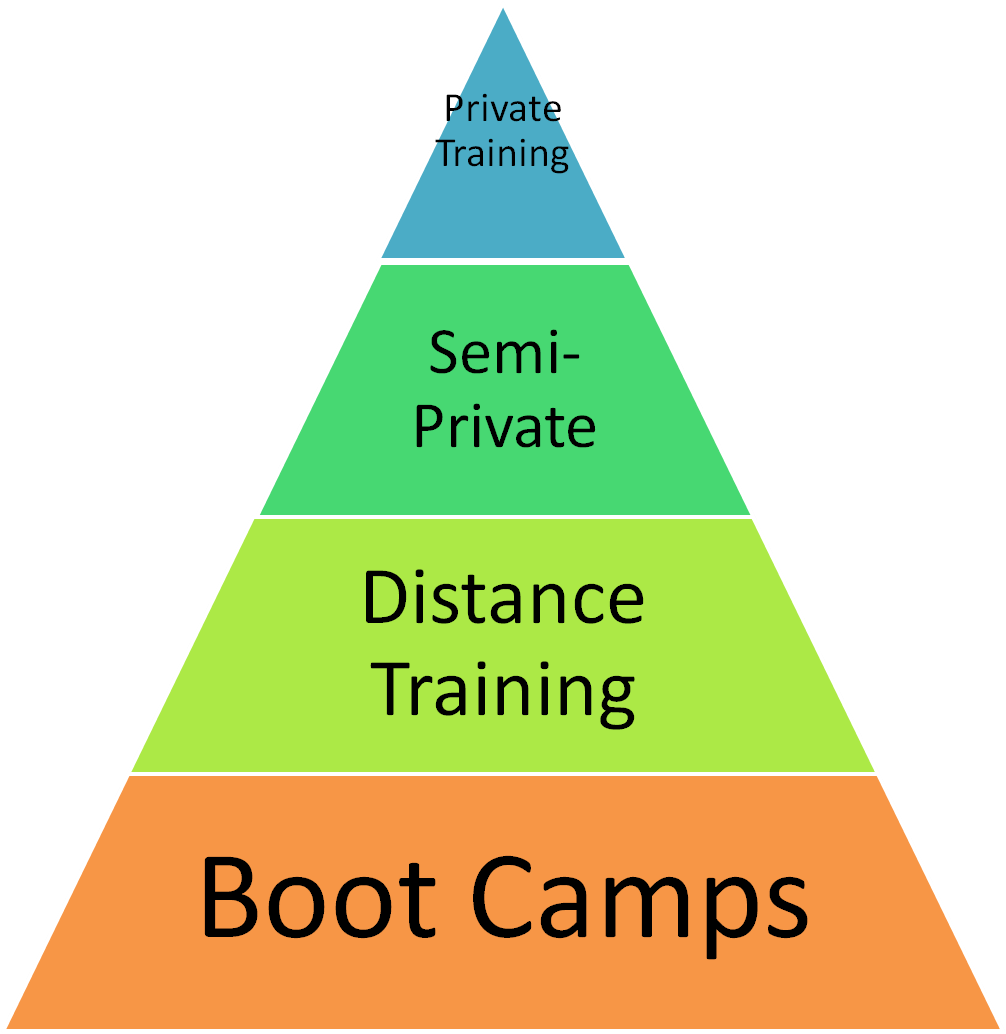How Everyone Can Afford Personal Training
Let’s say you’re hankering to get yourself a little bit more fit. You know, crank that keg up into a six-pack. Drop the love handles and bust out some wheels of steel. January’s coming, after all, and you want to look ridiculously hawt when you’re….scraping the ice off your windshield?? Whatever floats your boat. So you decide the best way is to get a trainer, and I’m not talking about one of those Biggest Loser reject trainers who all they do is yell and make you do exercises poorly.

I’m talking about someone who actually knows what the hell the difference is between their ass and their acetabulum. Someone who went to school for a while and who can actually tell you whether your shoulder pain is a strain, a tear, a biomechanical dysfunction, or something completely foreign that needs an exorcist and a bottle of vodka to deal with it. But when you meet with your local hot-shot trainer, he tells you that each hour with him will cost the equivalent of your entire days salary. What’s up with that!!?!?
Let’s face it: Paying for stuff sucks. I mean, why can’t people just give you stuff out of the goodness of their hearts? Why do banks have to demand payments? On time even?? Cheeky bastards. In a perfect world, bootlegging would be recommended, people would perform services out of the goodness of their hearts, and we’d all look like supermodels, making actual supermodels normal, and thus limiting their cockiness. Naomi Campbell would be working as a barista at Starbucks, and instead of throwing her phone at people, she’d wind up throwing steaming hot lattes at everyone, and wind up in prison instead of in a community service program.

I’ve heard from a lot of potential clients that they’d love to train with me but “I’m soooo expensive.” Granted, a single private session with a trainer will typically run someone between $50-100, depending on the trainer, their experience and education. What’s more, the best trainers are typically the busiest, meaning a time-crunch for when they can take new clients, if at all. But in defence of this, I have to say that you pay for what you get, and the most expensive trainers are expensive for a reason. They get results. You’re not going to get anywhere with a trainer who de-values themselves to only charging $30 a session. What does that say about their quality of service? Where does this leave a potential new client looking for top-notch training on a budget? I’ll give you some options, as well as the benefits and drawbacks of each.
Private Training Sessions
Cost: $$$$$
Benefits: $$$$
The gold standard of personal training, the Private session means you’re getting 100% of the attention for 100% of the time. The program is specific, individualized, and tailored to how you’re feeling that day and where your strength is increasing. The downside is the cost is higher, the hours are selective, and the company is pretty limited to only one person. Hopefully you two actually get along for an entire hour, or that your trainer doesn’t have the personality of a wet towel.

Within these sessions, you’re going to get in shape. There’s nowhere to run, nowhere to hide, just a spandexed out ball of hyper and a squat rack calling you things like muffin and cupcake and Princess Softie McSweetie-Pie to get you all riled up angry (and probably a little embarrassed because secretly you like it) and lifting some heavy shit.
This option typically gives the client a program they can do with the trainer, as well as the possibility to build a program to do on your own, or even to do a personal program set-up to do on your own if you’re so inclined.
Semi-private Training Sessions
Cost: $$$
Benefits:$$$$$
Getting a small group of people together to train is probably the most effective method of getting into shape. Think of it this way: every one is competitive. Now I know you’re probably thinking “Well, not me Dean, I know better than to try to compete with anyone.” Bull. You look over to your left and see the person there doing 20 reps, and you were only supposed to do 15, and guess what?? You’re doing 20, baby, whether you like it or not. You’re not going to sit back and be the slow kid in the group, you’re gonna push like a mutha to try to be the best in that group. But I get it: You’re not competitive.
Small group or semi-private training gives a price discount per session, while also giving you a few like-minded people to sweat alongside, motivate, and be motivated by in return. It also gives more scheduling freedom by increasing the number of bookable session times available in the day, which makes it easier to schedule the time to get a good old fashioned butt kicking.

Distance Training
Cost: $$
Benefit: $$$
Let’s say your favorite lovable trainer lives outside of your zip code. Or, let’s say you would prefer to not get a gym membership where he or she trains (What? It could happen), but you still want to get access to the highest quality in personal training available. With the technological capabilities afforded to anyone with a YouTube account and email access, you can get a program designed for you, and have video coaching and cueing set up so that you can get valuable feedback on your exercise performance along the way, as well as the valuable motivation needed to keep you on track. Want more? The best know how to provide more. With software packages designed to increase value to personal training clients with a handy-dandy internet connection, it can make training easy peezy lemon squeezy for any newbie or experienced worker-outer to get some benefit from shared knowledge
Typically, a monthly access to a trainer through distance will run about $60-100, roughly the cost of one training session, but will make you have to work out on your own. If you’re a go-getter in the gym and feel you have a pretty good handle on how to do a squat, this would be a great option.
Boot Camps or Large Group Training
Cost: $
Benefit: $$$
Having a bigger group of sweating and swearing people together at one time brings about a certain, I don’t know, primal feel to your workouts. It’s one thing to run on a treadmill by yourself, but it’s another to run through a River Valley with a crazy blonde-haired headbanded speed demon chasing you in a game of “Fox and the Hare.” All the while thinking “Oh God, I’ll have to do more lunges and push ups and shit like that when we stop running!!! Why does my life suck so much!!?!??” Get over it Princess. This is Boot Camp!!

Let’s hope Rudolph is packing an AED in his nose.
A large group training atmosphere gives you a set workout program for everyone to follow, with some variations allowable, and makes you work like a red-headed stepchild locked in the attic and fed with a slingshot through a metal grate.
These tend to be cardio-heavy, focusing on pure caloric expenditure and fat loss, with good programs balancing out some strength training with body weight variations and the use of some toys. I’ve said it in my Boot Camps before: “If you join the Army, they don’t get you using balls or bands, or anything like that. You’re gonna be running, squatting, doing push ups, and crying to your mama!!!” By having a lot of people together at once, the cost goes way down, around $10-20 per session. The value is great, but individualized, it is not!!!
Now let’s say you’re a greedy bugger and you want the best of all worlds. I have clients who’ve decided to train in private sessions once a week, do a group training session once or twice a week, and also take a Boot Camp class once or twice a week. This means they’re training with me pretty much every day and paying as much as they would need to in order to train with me two or three times a week. I also have clients that train exclusively with me in Boot Camps, but once in a while they want a specific program to do on their own, so they get a private session or two to go over a new program and to work on progressions and stuff like that.
If you’re a trainer and you don’t have a diversified program option, you’re losing out on a huge possible clientele market out there who may not have the funds, or the desire, to train in only one-on-one sessions. Also, if you give people a few additional options, they will more than likely end up getting more than they would with one or two premium options. An example was a client who didn’t want to do group training, but who wanted to try Boot Camps out for a while. After two months, they decided to try small group training, in addition to Boot Camps, and then eventually wanted to get some targeted help with some nagging issues that couldn’t be addressed through group options, and wound up getting some private sessions. With only the private option available, this client wouldn’t have even started training, and would probably be in the same place as when they started.
Trainers should consider this sort of like a hierarchy, where they have the majority of their clients in a large-group style session and the minority in the private training option, with semi-private and distance clients in the middle holding the ends together.
 This type of system can help maximize trainer time, client value and attention, maximize the number of clients a trainer can successfully work with, and maintain the income for the trainer so as to not necessitate 14 hour days or jacked up fees.
This type of system can help maximize trainer time, client value and attention, maximize the number of clients a trainer can successfully work with, and maintain the income for the trainer so as to not necessitate 14 hour days or jacked up fees.
10 Responses to How Everyone Can Afford Personal Training